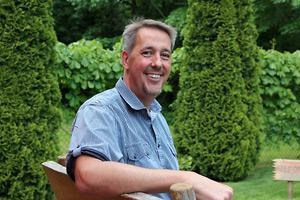A group of students from the University of Saskatchewan are living in the Tla’amin (Sliammon) First Nation community for four weeks this summer.
They are part of an ethnohistory field school that has been organized by Keith Carlson, a professor of history at the university who was born and raised in Powell River.
Carlson, who graduated from Max Cameron Secondary School in 1984, is the editor of the Sto:lo Coast Salish Historical Atlas, and the author of numerous books and articles on Coast Salish history. For many years he has wanted to return to his hometown and work with the Tla’amin community. He and Michelle Washington, land use planning coordinator with the Sliammon Treaty Society, had been talking about that possibility for about five or six years, around the same time that Dana Lepofsky, a professor of archaeology at Simon Fraser University (SFU), started to do archaeology fieldwork in collaboration with Tla’amin.
Washington has wanted to have a Tla’amin atlas, Carlson said, and the students’ work this summer is designed to eventually produce an atlas. “Atlases are great ways to show history and space at the same time and people love maps. If you can have maps that show people Powell River, but maybe in a way that they’re not quite as familiar with, that in my mind helps to open up a door for a conversation.”
The SFU fieldwork has resulted in information about the archeological history of Tla’amin and the region, Carlson said. “That gives us a whole lot of that deep history, that 300 years way back to 10,000 years that they’ve been working on. People are thrilled with archaeology too. People love that. Then we have the more recent, what Sliammon is doing right now, that they speak about themselves.”
That leaves the period from the late 18th century up until World War II as a bit of a dark spot, Carlson explained. “Yet there are some really interesting archival records, some good ethnographic records and some good oral history that do describe and interpret and help us understand that period.”
A group of 11 students have come to Tla’amin to work with community members and conduct research. While they’re registered as University of Saskatchewan students, they come from all over Canada, including Quebec, Ontario, Saskatchewan, Alberta and British Columbia. They range from fourth year undergraduates who have just finished their third year and are getting ready for their last year to master students who are finishing their first year. There is one student who is a doctoral student from Ontario. There are also four doctoral students who are working as the field supervisors. “They’re all working on projects that the Sliammon community has identified that could become parts of the atlas down the road when we finish it,” said Carlson. “They’re meant to be ethnohistorical. They combine space and time, geography and time. They’re on topics that Sliammon people have identified as being important and meaningful to them.”
There is one SFU doctoral student who is continuing excavation work on Harwood Island. Students will spend one week on Harwood assisting in the dig, then three weeks working on a combination of oral history and documentary history work in the community. That includes working with Captain Vancouver’s journals from 1792 to working with Indian Affairs records from the 1920s and with Catholic Church records, Carlson said.
Topics range from religion and spirituality to the history of the Tla’amin cemetery. “We’re going to map the cemetery and do oral histories for every one of the graves that we can. That will be in a database with a map that the community can continue to add to as they see fit over time.”
Other topics include examining the history of conflicts, such as raids, with other aboriginal groups and environmental history and change.
Rethinking treaty
Keith Carlson has a fresh perspective on the Tla’amin (Sliammon) First Nation treaty, which community members will be voting on this Saturday, June 16. Carlson, whose career has been immersed in aboriginal history, said Powell River is on the verge of getting a treaty, not Tla’amin. “That’s our treaty,” he said. “We should be excited about that. People are saying, what’s Sliammon getting? Well, what are we getting? We should be saying, Sliammon said we can keep our houses. Yea! We should be happy. We don’t seem to want to think of it that way, but I think that’s a healthy thing to do sometimes. We could be treaty beneficiaries in a way. The things we do here are legitimated. We have an agreement with Sliammon now to use their resources, the land and such. I think that’s kind of a neat moment, or could be if they say yes.”
Carlson has always been interested in those moments where natives and newcomers came together and what this has meant for society.



